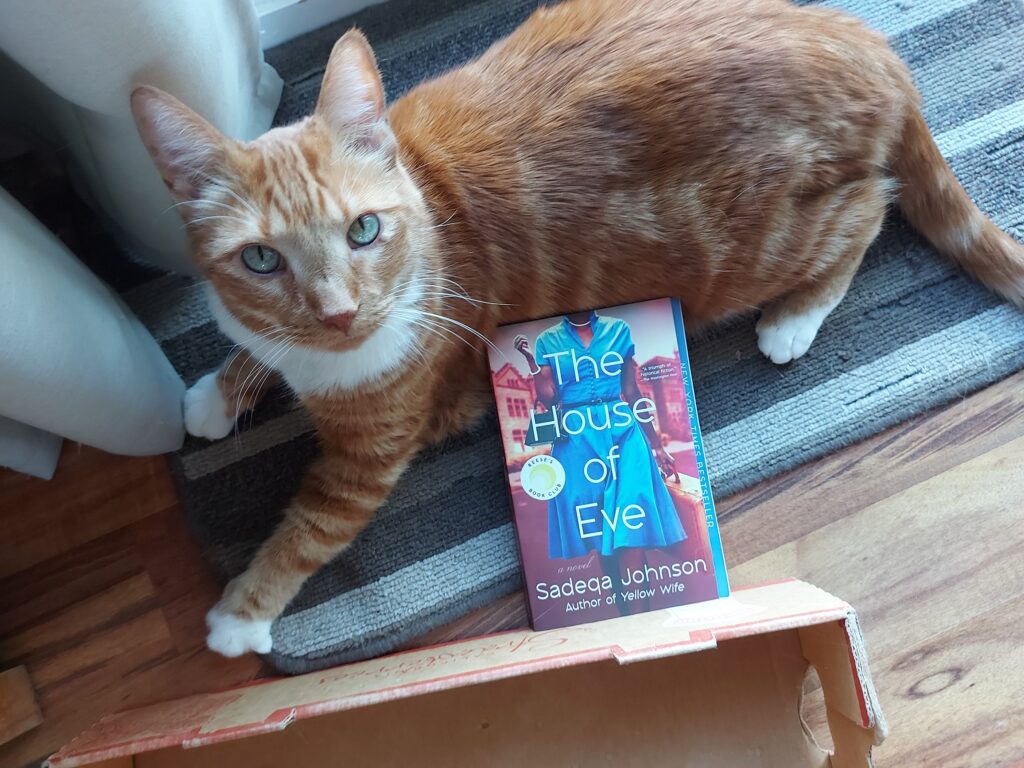The House of Eve by Sadeqa Johnson

The House of Eve is Sadeqa Johnson’s follow up novel to Yellow Wife, and it even has a surprising connection to Yellow Wife. The House of Eve is also a historical fiction novel about racism in the US. I did not find this novel to be as affecting as Yellow Wife. It is an interesting story, but some aspects of it are underwhelming.
The House of Eve is set in the US in 1948 and 1950 and is about the experiences of two Black female characters. The first is teenager Ruby, who lives in Philadelphia. Ruby was raised by her grandmother and has a tenuous relationship with her mother, who gave birth to Ruby when she was a teenager herself. Ruby does not know her father as he is from a wealthy Black family who turned their backs on Ruby’s mother when she became pregnant.
Ruby is a smart girl who is working hard at school to obtain a scholarship to college so that she can become an optometrist. It is not a spoiler to reveal that Ruby is doomed to repeat the mistakes of her mother when she gets involved with a white Jewish boy, Shimmy, even though she knows better because interracial relationships are illegal in the US in 1948. I tried not to be too hard on Ruby while reading this novel, because teenage hormones and all, but I was disappointed that she became pregnant and potentially ruined her chances of being the first person in her family to go to college and make something of herself.
Then Shimmy’s mother intervenes, offering to help Ruby with putting her baby up for adoption and securing her scholarship to college, on the condition that she never sees Shimmy again. Despite Shimmy’s protestations of love and offer of marriage (which cannot even happen anyways because it is illegal), Ruby finally makes a smart decision and takes Shimmy’s mother up on her offer. Ruby is sent to a Magdalene Home in Washington, DC, to give birth. This particular Magdalene Home offers up four beds at a time for pregnant, unwed Black women whose babies are adopted by wealthy Black couples who cannot have their own children. If you know anything about the Magdalene Homes, then you know this is not a good experience for Ruby. Her birth scene is absolutely disgusting in its blatant racism by the white doctors and nurses, a reminder that even though slavery is long abolished, white brutality against Black people has never disappeared.
The second character is Eleanor, a young woman attending Howard University in Washington, DC. There are some similarities between Ruby and Eleanor: they are both from poor Black families, they are both smart and work hard at school, and they both derail their own plans by getting involved with the opposite sex. Eleanor finds herself falling in love with handsome medical student William, who is from one of Washington’s wealthiest Black families. While Ruby’s experience focuses on racism by white people, Eleanor’s experience focuses on colorism in the Black community. As Eleanor’s relationship with William progresses, she realizes that his family takes pride in their light skin, and William’s mother dislikes her because she is a dark-skinned Black woman. I find colorism to be baffling, while at the same time understanding that it is borne out of internalized white supremacy.
Like Ruby, Eleanor finds herself pregnant and unwed, but William seems to genuinely love her, so he marries her against his mother’s wishes. But Eleanor cannot carry a child to term, so she and William decide to adopt, and you can see it coming a million miles away, the connection between Ruby and Eleanor.
Yes, I found The House of Eve to be a predictable novel, which is why I am somewhat disappointed by it, but Ruby’s experience with the Magdalene Home and Eleanor’s experience with colorism make it worth reading.